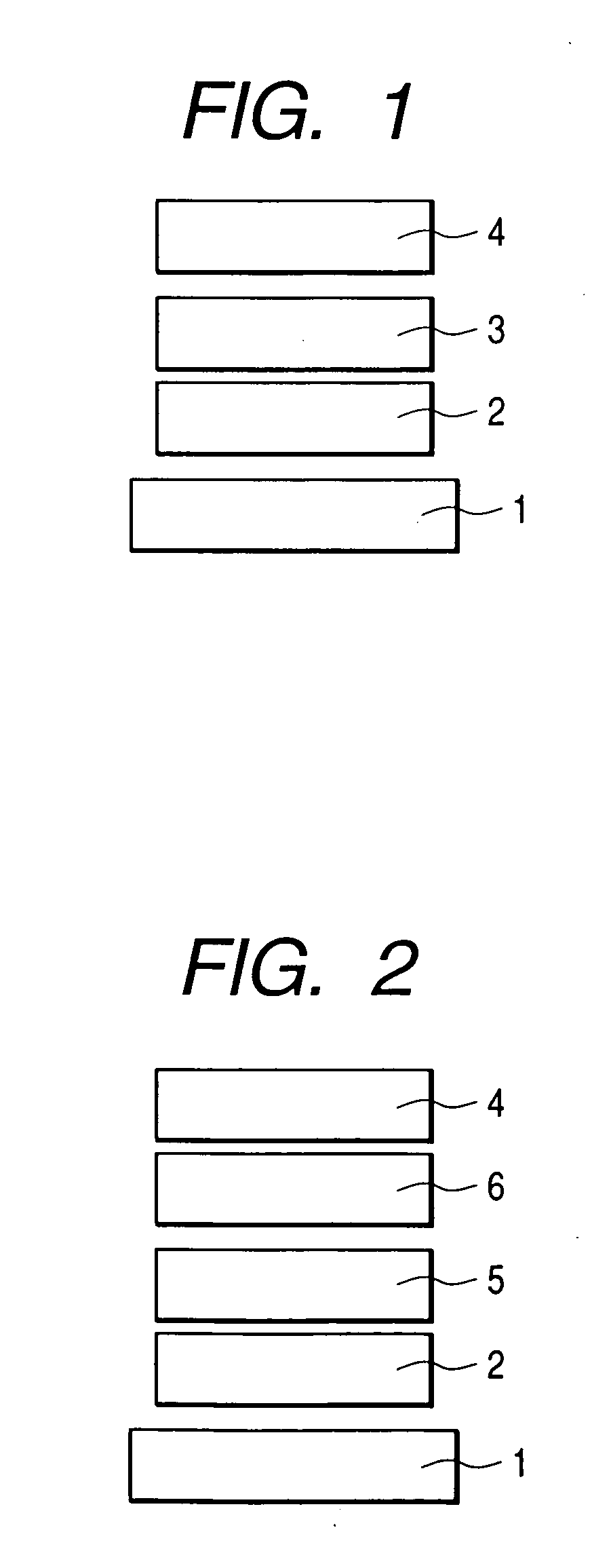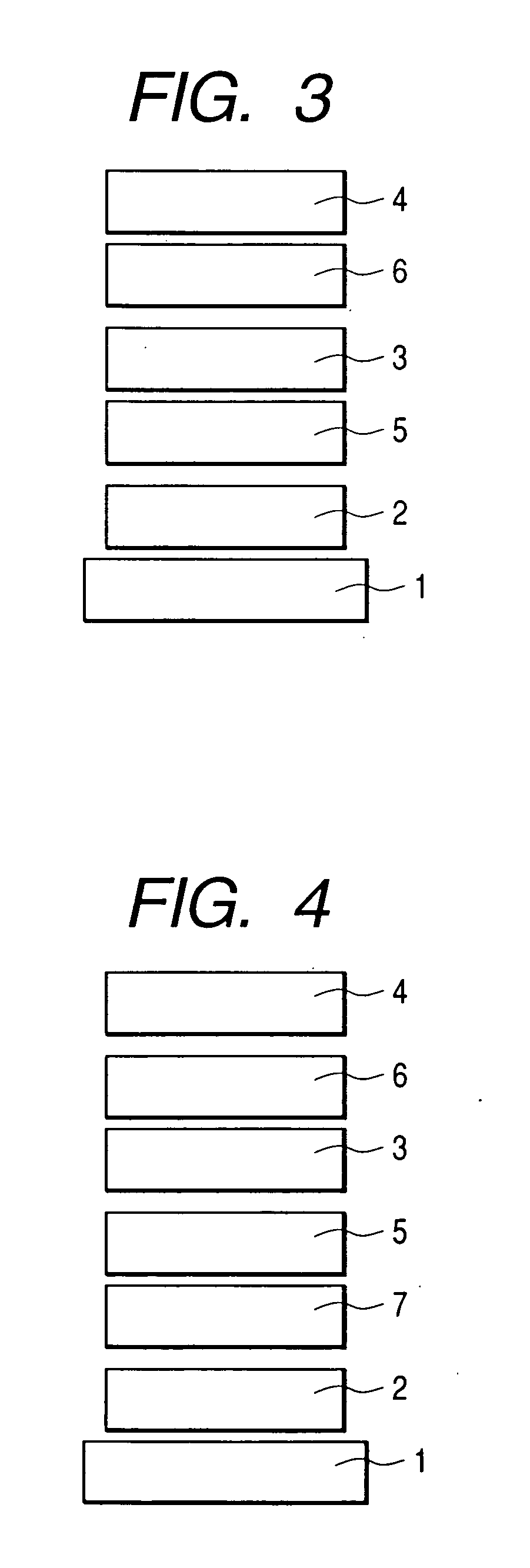Monoamino compound and organic luminescence device using the same
- Summary
- Abstract
- Description
- Claims
- Application Information
AI Technical Summary
Benefits of technology
Problems solved by technology
Method used
Image
Examples
example 1
Method of Producing Exemplified
[0083] Compound No. [1]—38]
[0084] In a nitrogen flow, 160 mg (0.282 mmol) of palladium bis(benzylideneacetone) and 170-mg (0.846 mmol) of tri-tert-butylphosphine were dissolved in 40 ml of toluene and then stirred for 15 minutes at room temperature. Then, 0.58 g (1.27 mmol) of 4,4′-dibromo-2,2′,3,3′,5,5′,6,6′-octafluoro-1,1′-biphenyl dissolved in 50 ml of toluene was dropped into the mixture and it was stirred for 30 minutes. Furthermore, 0.34 g (1.27 mmol) of N-(9-anthracenyl)-N-phenylamine was dissolved in 50 ml of toluene and was then dropped therein, followed by the addition of 0.18 g (1.91 mmol) of sodium tert-butoxide. Then, the mixture was heated and stirred for about 8 hours in an oil bath heated at 120° C. After returning the reaction solution to room temperature, 50 ml of water was added thereto and the resultant solution was then separated into an aqueous layer and an organic layer. Furthermore, the aqueous layer was extracted with toluene a...
example 2
Method of Producing the Exemplified compound No. [1]—109]
[0086]
[0087] In a nitrogen flow, 1 g (2.98 mmol) of 9,10 -dibromoanthracene and 1.44 g (4.46 mmol) of bis(4-methylphenyl)aminobenzene-4-boronic acid were dissolved and stirred in a deaerated mixture solvent of 100 ml of toluene and 50 ml of ethanol, followed by dropping a sodium carbonate aqueous solution prepared by dissolving 9 g of anhydrous sodium carbonate in 45 ml of water. After stirring the mixture for 30 minutes, 257 mg (0.223 mmol) of tetrakis(triphenylphosphine)palladium was added thereto. Then, the mixture was heated and stirred for about 3 hours in an oil bath heated at 80° C. After returning the reaction solution to room temperature, 40 ml of water and 50 ml of ethyl acetate were added thereto and the resultant solution was then separated into an aqueous layer and an organic layer. Furthermore, the aqueous layer was extracted with toluene and ethyl acetate, and was then combined with the previous organic layer an...
example 3
[0089] An organic luminescence device constructed as shown in FIG. 3 was produced by a method described below.
[0090] A glass substrate provided as a substrate 1, on which a film of indium tin oxide (ITO) of 120 nm in thickness was formed as an anode 2 by a sputtering method, was used as a transparent conductive support substrate. This substrate was sequentially subjected to ultrasonic cleaning with acetone and isopropyl alcohol (IPA), and was then washed with IPA by boiling, followed by drying. Furthermore, one washed with UV / ozone was used as a transparent conductive support substrate.
[0091] A chloroform solution was prepared by using a compound represented by the following structural formula as a hole-transporting material so the concentration of the solution would be 0.5% by weight.
[0092] This solution was dropped on the ITO electrode (the anode 2) and was then spin-coated at a rotation speed of 500 RPM for 10 seconds at first and next at a rotation speed of 1000 RPM for 1 mi...
PUM
| Property | Measurement | Unit |
|---|---|---|
| Length | aaaaa | aaaaa |
| Volume | aaaaa | aaaaa |
| Volume | aaaaa | aaaaa |
Abstract
Description
Claims
Application Information
 Login to View More
Login to View More - R&D
- Intellectual Property
- Life Sciences
- Materials
- Tech Scout
- Unparalleled Data Quality
- Higher Quality Content
- 60% Fewer Hallucinations
Browse by: Latest US Patents, China's latest patents, Technical Efficacy Thesaurus, Application Domain, Technology Topic, Popular Technical Reports.
© 2025 PatSnap. All rights reserved.Legal|Privacy policy|Modern Slavery Act Transparency Statement|Sitemap|About US| Contact US: help@patsnap.com



